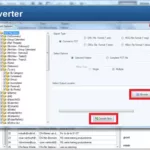
How to Choose the Right Business Process Management Software
In years past, organizations were required to perform every business process by hand. These were complicated and time-consuming efforts, but there weren’t any quick workarounds available to make them any easier.
Then, we entered the Information Age.
Suddenly, our focus shifted from industrial production to computerization and automation. We have a greater number of insights at our fingertips than ever before, but are we making the best use of them?
Business process management (BPM) cloud software can help you leverage this data. By moving their best practices to the cloud, companies can save time and money. They can also reduce the potential for human error and create more accurate and compelling reports.
Not sure how to choose the best one for your business? Today, we’re breaking down all of the key features to consider and compare.
Business Process Management Cloud Software
Before we dive into the different types of business management software, let’s briefly discuss what these solutions include. Put simply, these are enterprise-level software solutions.
They are designed to help users automate common, repetitive tasks. Many programs can also perform basic processing and logistics. By automating these processes, you can greatly reduce the amount of time it takes to perform a given workflow.
While some companies choose to keep these services on in-house servers, that can take up a significant amount of space in any business facility. Not only are they physically in the way, but business leaders are also tasked with keeping the systems in good condition.
This means calling IT staff members to troubleshoot and maintain the system. In turn, this pulls them away from their current job responsibilities, which can leave everyone feeling stressed.
By performing these same functions in the cloud, users can enjoy access to the same benefits and ease of use. However, they don’t have to contend with any type of server. They can also rest assured that if anything goes wrong with the system, the third-party provider will be responsible for correcting it.
Performing a Business Maturity Assessment
In a process maturity assessment, team leaders take a close look at their company’s current processes. They analyze if each one is working or not, and how well it contributes to the company’s overarching strategy.
If a process is highly likely to contribute to that strategy, then it is considered to be mature. If it misses the mark or doesn’t deliver any type of real value, then it is deemed immature.
You’ll take a similar approach when performing a business maturity assessment. The key questions you’ll ask during this assessment include:
- How is our organization currently working toward our strategic initiatives?
- Have we established a culture of change that allows us to constantly improve?
- Have we established a culture of continuous improvement to routinely review or audit processes?
Once ask these questions and analyze the answers, you will have a clearer picture of where your business stands on the maturity scale. Then, you will be able to select business management solutions that can move you closer to your long-term goals.
Best Business Process Management Software: Features to Compare
It only takes one quick Google search to discover that there are hundreds of different types of BPM software. To help make your decision a little easier, it helps to understand the key features that define each plan.
With these in mind, you can narrow down your selections to only those that meet your strict criteria. Though it might seem ideal at first to have so many choices, you could find yourself in an endless loop of sales pitches and vendor presentations.
Cost of Acquisition
If you choose a traditional BPM solution, then you will be required to pay for the on-premise software license, as well as annual fees. These expenses can be high unless you’re at the helm of a major corporation, where operational spending is very flexible.
This is why cloud-based BPMs are ideal.
These solutions operate on software-as-a-service (SaaS) business models, so you only pay for the level and number of services that you need. The size of your company is important and can determine if you need to invest in a larger plan or stick with the basic one. Research key pricing models, such as the cost of NetSuite, to understand your true financial commitment.
Time to Deploy
Some cloud-based BPM solutions are usable as soon as you receive them. Once you unbox the solution, you’re all set up and ready to go live. While you may have to customize some of the standard templates, this is usually a quick fix that doesn’t even require IT support.
On the other hand, others aren’t quite as simple or straightforward. For instance, you might find that your software requires extensive, time-consuming customizations or major coding. Or, you may have to build your core processes all over again to make use of its features.
You don’t want to be surprised at this realization after you invest. Before you sign on the dotted line, make sure you understand the general deployment timeline and what you’ll need to get up and running.
User-Friendliness
For cloud-based BPM software to help your company, it has to be easy to use. It’s as basic as that. However, many business leaders get so caught up in the bells and whistles of a particular solution that they miss its usability.
System training can help your employees get up to speed on the new system. You can also invest in organizational change management to ease the transition.
Yet, neither will help if the software is inherently cumbersome or difficult to use. If your team members have a poor experience with it, then they will be less likely to take advantage of it when it goes live. This can lead to costly downtime and low user adoption rates.
Both of these issues cut into the ROI of your software, so it’s important to avoid them before they occur. This is especially the case with any problems that affect the system’s responsiveness. Your mobile users require a fully responsive system to do their jobs on the road, and the software you select should be up to the task.
It helps to include end-users in the software selection process. They can weigh in on the features that they need and any pain points that they’re currently facing. Executives can consider their opinions when making their final selection.
Vendor Experience and Qualifications
With each vendor presentation, you’ll hear how experienced and reliable the provider is. These are designed to sway on-the-fence decision-makers and give them the peace of mind they need to move forward.
However, don’t just take these speakers at face value. Instead, take the time to ask them important questions about their history and background. A few of the most common inquiries include:
- How long have you worked in the BPM space?
- What is your typical client base?
- How many active clients do you currently have?
That last question is an important one. If a vendor has a hefty number of active clients, then this can speak to their professionalism and good reputation. In a similar vein, be wary of partnering with any brand-new companies or ones that have lost a lot of subscribers over the past few months.
Customization Required
As mentioned, basic customizations won’t detract too much from your project cost or timeline. However, this isn’t the case with more extensive ones.
If you must modify the BPM software to a great degree, then it might not be the best one for your business. However, keep in mind that even if you do need to customize it a great deal, you may be able to get by in the meantime by tweaking pre-built templates.
No, these won’t be built according to your specs. Yet, you should be able to modify them as necessary to get by while your customizations are being worked.
Ability to Scale
Chances are, you don’t want your business to stay stagnant. You want to grow and you need a BPM solution that can grow with you! In the software world, this is known as scalability.
Does the solution you’re eyeing include built-in load balancing capabilities? If not, then continue your search elsewhere. You need load balancing to ensure that your solution is accessible from anywhere at any time, even as your current deployment grows.
Choose the Right Business Process Management Cloud Software
The right type of business process management cloud software can totally transform your business. It empowers your employees to work smarter, not harder. It also saves you from the time, money, and stress associated with manual processes.
Take your time and do your due diligence on each solution before you make a decision. Make sure the one you choose is user-friendly, quick to deploy, and easy to scale.
Looking for more advice on everything from business to sports? Check out our other guides online!















